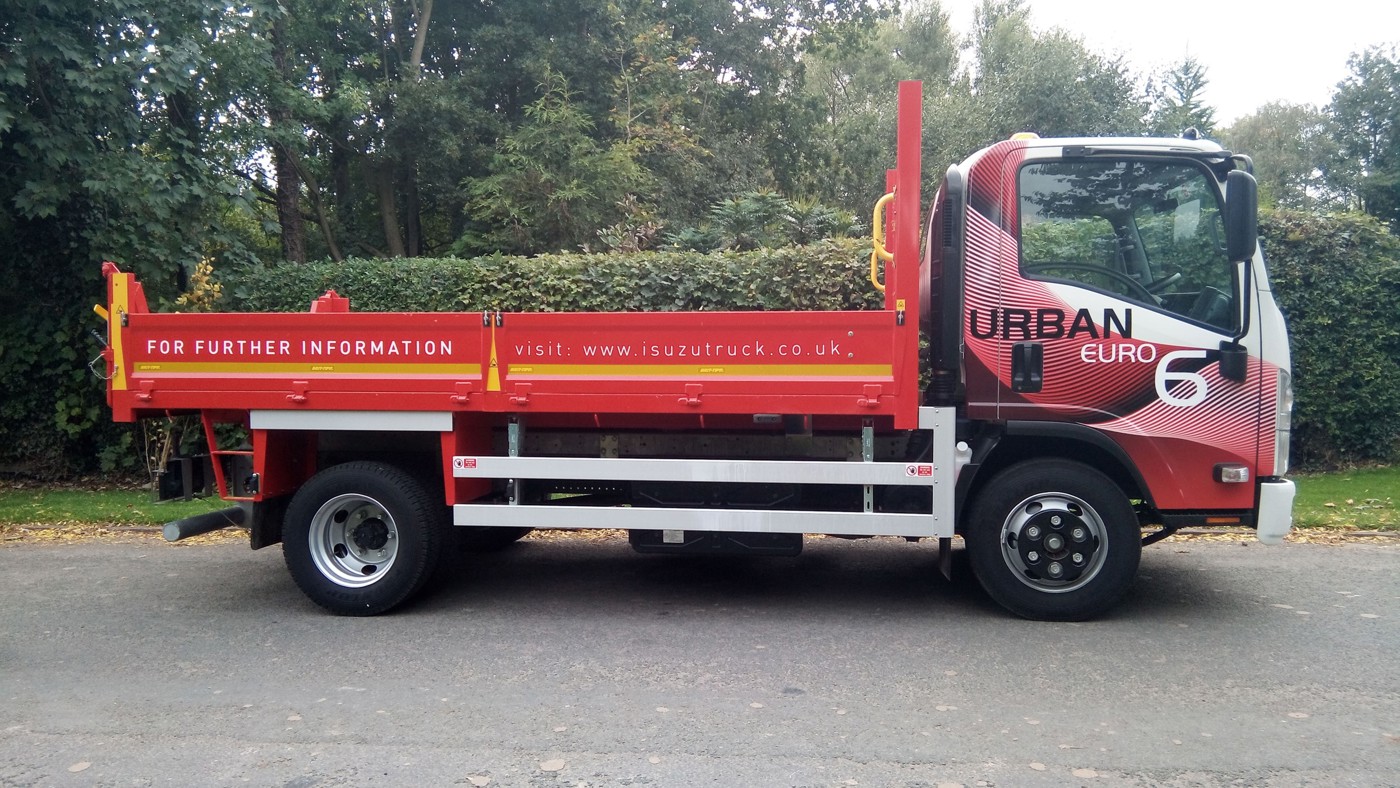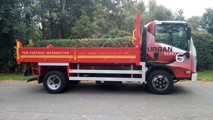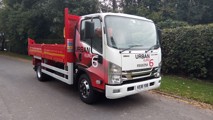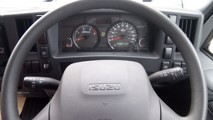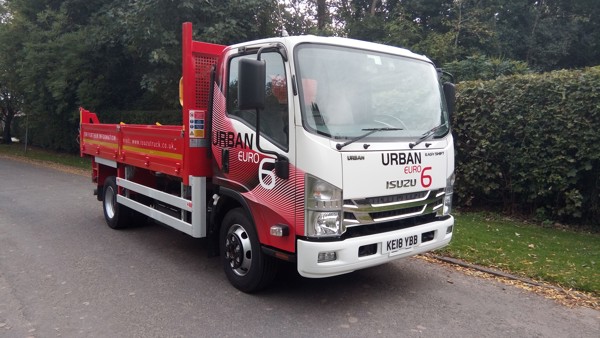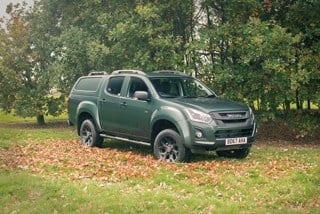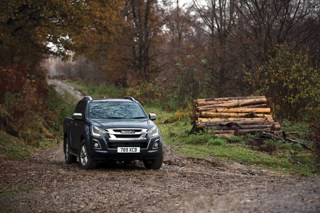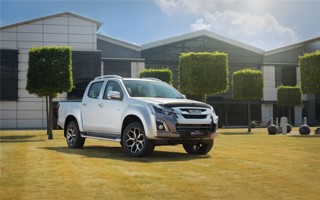Review
Isuzu Trucks has secured itself a niche market in the lighter end of the rigid sector, with both its 3.5- and 7.5-tonners. This comes as no surprise given its reputation for developing lightweight chassis.
Operators are always looking for vehicles that will help them maximise their payload – particularly as the gross vehicle weight (GVW) reduces.
Perhaps the second target market for this vehicle type is the urban distribution sector – thanks to it having a low cab compared with the fuller-sized and traditional European-based offerings.
The N series is ideally suited to the hustle and bustle of city life with its good visibility that allows the driver to feel “in touch with his or her surroundings”.
Diesel engines and Isuzu go together like “birds of a feather”, as the saying goes, and the 5.2-litre 4HK1E6C four cylinder engine uses diesel particulate filters (DPD) and selective catalytic reduction (SCR) to keep within the Euro VI levels and produces 190PS (140kW) at 2,600rpm and 510Nm of torque at 1,600-2,600rpm.
Matched to the 5.2-litre engine is Isuzu’s own six-speed gearbox with a fully automated electro hydraulic controlled system, with direct drive on fifth gear and a 0.782 overdrive on sixth.
Within the N series chassis cab range there are three wheelbases from 3,365mm to 4,475mm, offering body lengths of 4,267mm to 6,096mm.
The chassis is lightweight (but by no means too light) and therefore it offers some of the best body and payload capabilities in the industry from 4,638kgs to 4,576kgs.
The 7,500kgs GVW front axle is plated at 3,100kgs and the rear axle is a generous 6,000kgs. Interestingly, there’s a train weight of 8,250kgs with a 11,000kgs option.
The frame is a typical parallel ladder type and rivetless on the upper flange. Hanging from the chassis are a reverse Elliot-I beam at the front and a Banjo-type fully floating rear axle.
Suspension is provided by parabolic springs on the front and semi-elliptical springs on the rear; both have shock absorbers and anti-roll bars as standard.
A traditional vacuum servo-assisted hydraulic dual line lies behind the braking with ABS (anti-lock braking system), EBD (electronic brake distribution), EVSC (electronic vehicle stability control) and ASR (anti-slip regulation) all as standard.
Connected to the system are a set of 310mm ventilated discs with asbestos-free pads on the front and the rear with the parking brake mechanically actuated on a drum brake rear of the transmission and supporting the hydraulic braking system is an engine exhaust brake.
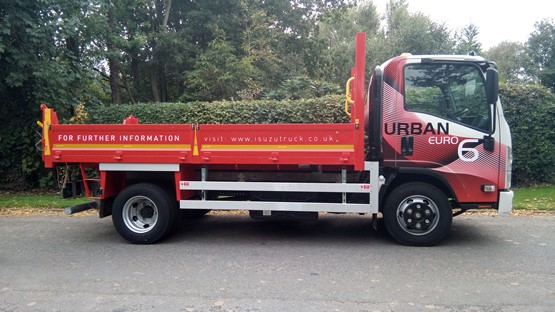
Keyless entry and immobiliser
Central locking with remote keyless entry and immobiliser are standard, and there’s also a lane departure warning system which utilises a camera monitor, driver alert system with a warning buzzer and LCD monitor.
All the wheels are 6.00J x 17.5 and there’s a set of 215/75 R17.5 radials tyres.
The most obvious feature of the N series truck is the low mounted cab which is typical of those used in Asia but which is becoming more common in the UK and the rest of Europe.
Inside the cab there’s a fully adjustable, mechanically suspended driver’s seat complete with headrest. Across from the driver there is a dual passenger seat with the centre seat folding down to reveal a tray. It also has a lap seat belt.
Isuzu Trucks also offers a crew cab – basically the same layout at the front as the day cab plus the addition of a wide rear bench style with seating for four that adds around 300kgs to the day cab model.
The dashboard is a traditional layout with a mixture of digital and analogue-looking instrument panel ahead of the driver. The central section contains the heating and ventilation controls along with a double DIN Clarion CD and mp3 player on top of this and by the side is a VDO digital tachograph.
For our test drive, we had the Urban tipper version of the N series. As you approach the driver’s door the benefit of a low-mounted cab strikes you immediately as it just takes one step to get you into the cab, and you’re on the suspended driver’s seat before you know it.
Looking down at the steering wheel there’s a stalk controlling the lights and indicators to the left and wipers to the right. The centre instrument panel is simple with the rev counter to left and speedo to the right with an LCD gear indicator in the centre.
The whole dashboard is a little ‘dated’ in outlook but functional and, let’s face it, drivers are not staying overnight in this vehicle so it suits its purpose. As if to emphasise this, to the driver’s left is a car-like handbrake actuator and just forward is the short autobox lever.
Perhaps one of the most impressive aspects is the lack of in-cab noise even though the driver is effectively sitting on top of the engine and, once drive is selected, the 190PS engine remains quite throughout.
The automated gearbox is a little more agricultural. It’s definitely a generation behind many of today’s European trucks and has tendency to hesitate when full power is applied, which, in some situations, can be disconcerting.
Our demo Urban Tipper was unladen which meant it had a tendency to ‘nod’ a little on bumpy roads. I am sure a couple of tons in the back would have cured that.
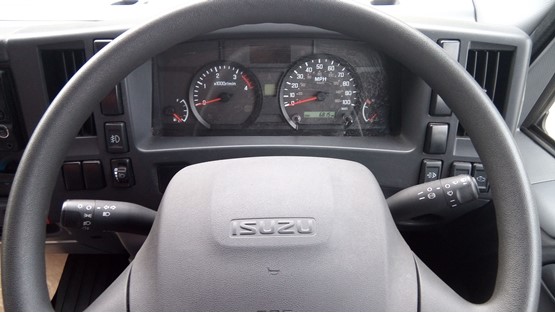
Verdict
A low mounted cab with a great payload potential should always win friends, and the Isuzu Urban deserves many among those who operate within a restrictive urban environment and are always ‘hitting’ the top end of their gross vehicle weight.
Landscape gardeners, builder merchants, fridge operators are just a few of its potential admirers



